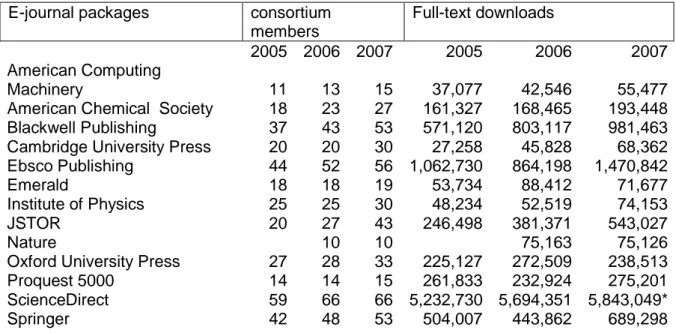Consortial Usage of Electronic Journals in Turkey
Tam metin
Şekil

Benzer Belgeler
açısını anlatıda fazlasıyla hissettirdiği, “nötr” ya da “objektif” olmaktan son derece uzak olduğu görülmektedir. Dolayısıyla bu roman, diegetik olmayan yani
Before investigating the impulse response and the imaging properties of quantized and sampled lenslet arrays, we achieved to formulate the focusing properties of such lenslet
Bursa, Balıkesir, Bilecik ve Çanakkale illerindeki keçi yetiştiriciliğinin yoğun olarak yürütüldüğü köylerde yapılan bu çalışmadan elde edilen sonuçlar, bölgedeki
Bu devletin ticari ilişkilerini sağlıklı yürütebilmesi ise bölgedeki devletlerle iyi ilişkiler kurmasına ve onları tatmin etmesine bağlıydı.Nitekim, bütün Kuzey Suriye
Tablo 15: Dünya Gelir Düzeyi lngw Değişkenine Ait Birinci Fark Birim Kök Testi Sonuçları Yatay Kesit 14.. Yöntem Im, Pesaran,
Konuyla ilgili en güncel uluslararası rehberlerden Türk Dermatoloji Derneği Veneroloji Çalışma Grubu tarafından büyük bir titizlikle hazırlanan ve sonunda yer verilen
Baseline environmental surveillance showed that 80% of the distal sites in intensive care units (ICUs) were positive for Legionella pneumophila.. Superheat-and-flush was selected